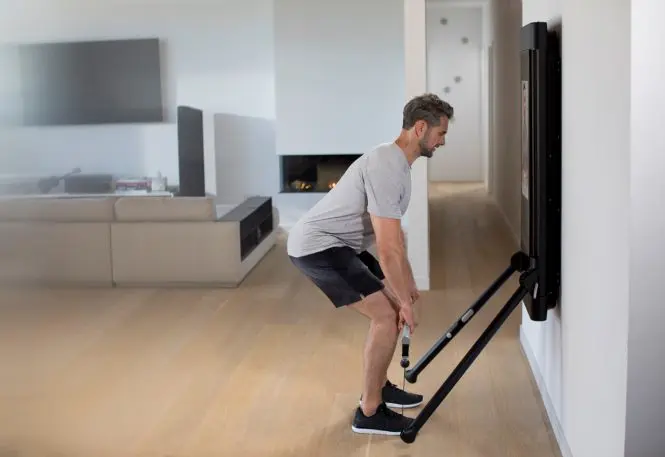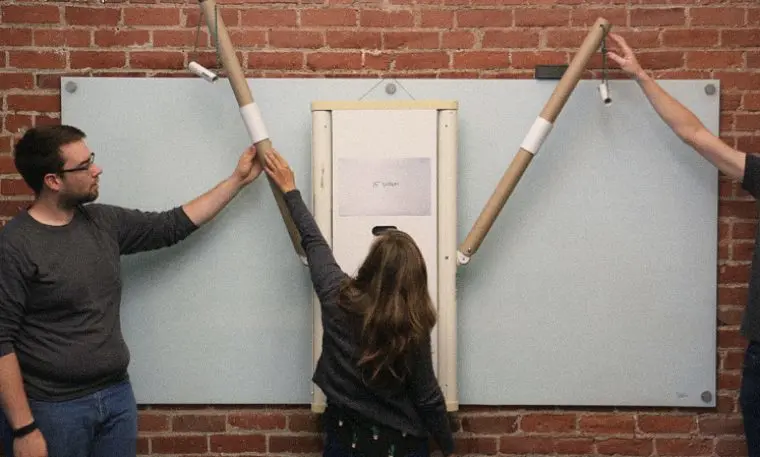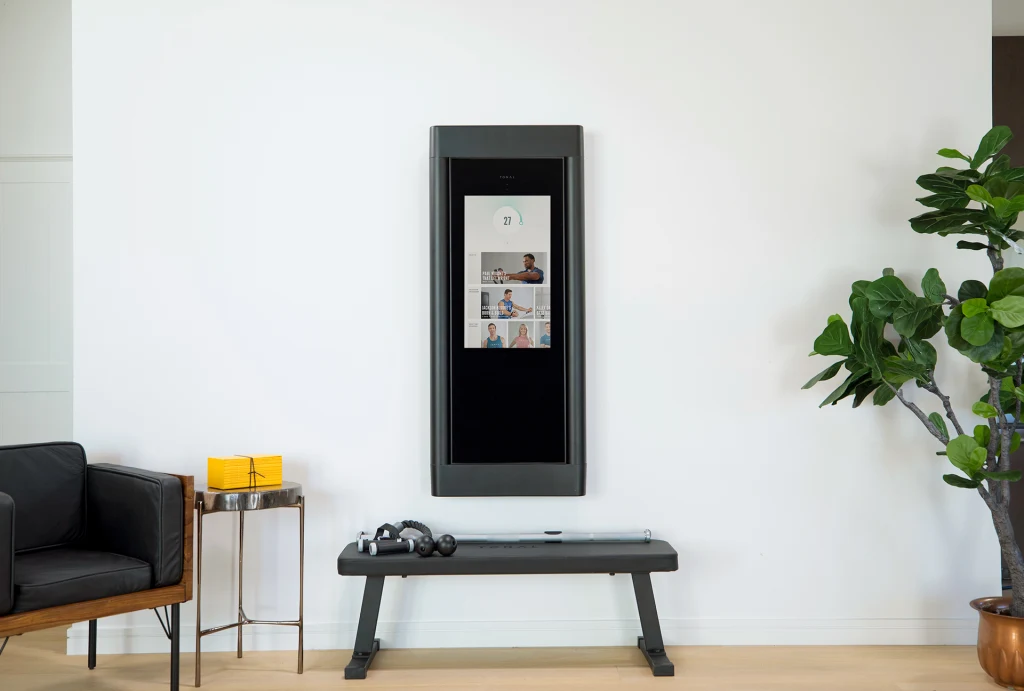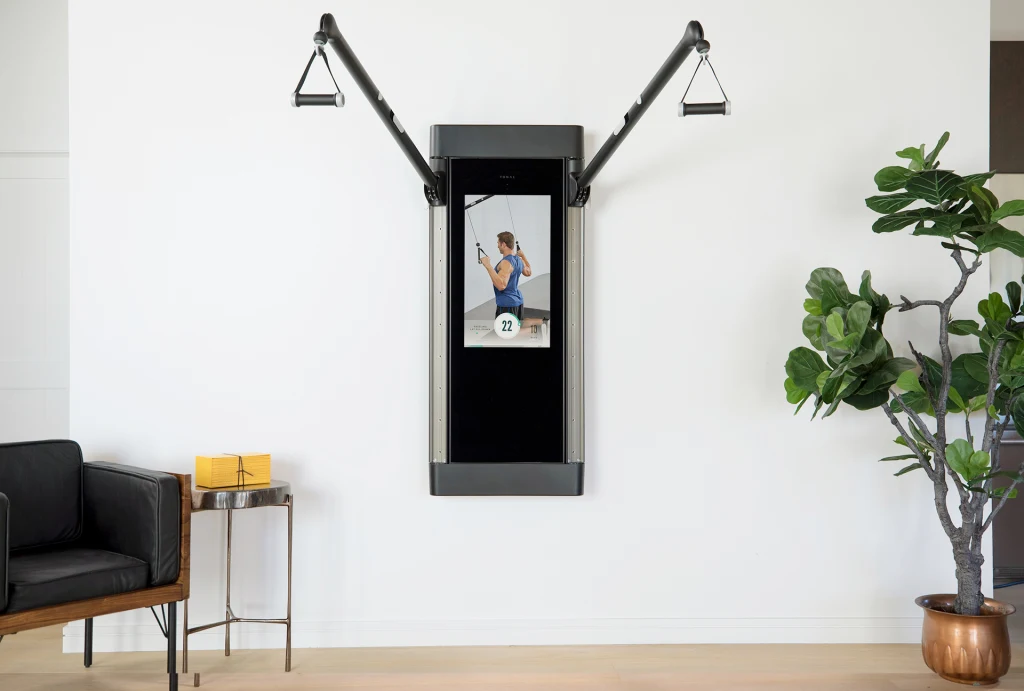Most weightlifting equipment that you’d find at the average gym is bulky and mechanical, not to mention ugly–and certainly not something you would ever want in your home.

But Tonal, a new strength training device that uses an engine to create resistance instead of heavy metal disks, looks just like a vertical flat screen television and wouldn’t be out of place on the wall of your apartment. When you’re ready to work out, you turn on the device and pull out two adjustable arms that enable you to do 200 different exercises. After the trainers on the screen run you through an initial baseline test, Tonal pre-sets the weight, up to 200 pounds, for every exercise, automatically cataloging and tracking your progress as you curl, lift, and squat.

Tonal originated three years ago, when founder and CEO Aly Orady was looking for a way to work out at home without having to sacrifice all the benefits of a gym, like the multitude of machines. With this goal in mind, he built an electromagnetic engine that would mimic the way traditional machines use gravity to create resistance. Pulleys wrap around the engine, which he says is about the size of a birthday cake–and far, far lighter than typical weight machines, which can weigh hundreds or thousands of pounds. When you pull on the cables’ handles, the engine pulls back using electromagnetic force–the same force that’s used to power electric cars. This entire process is controlled by a computer, which can precisely change and measure how you’re performing based on the way you pull.
Orady teamed up with Dan Harden, the CEO and principal designer at San Francisco-based design firm Whipsaw, to take his engine and turn it into a compact exercise machine that wouldn’t be out of place in the home. After mocking up potential solutions, the design team landed on an early prototype, which they then installed in an exercise space so that people could try it out. They tested the ergonomics with a wide range of people, from petite to towering, and tweaked the overall geometry of the device.

Based on feedback from these early users, the team also made the screen as large as possible to provide better access to Tonal’s custom workout content. It was crucial that Tonal was sleek enough to be on display, but there’s a practical reason for leaving Tonal out all the time as well–besides the fact that it has to be bolted to the studs in your wall. “It’s like my guitar,” Harden says. “When I put it in its case and put it in the closet, I don’t play. When it’s hanging on the wall, of course, I’m going to play. It’s right there. Same thing with Tonal. It’s right there. You’re going to use it.”

It’s the smaller design details that make Tonal seem far superior to watching fitness videos on YouTube. Besides providing a way to actually lift weights without having dumbbells scattered around your house, it also shows your progress and automatically adjusts the weight as you get stronger–or when you need help. One feature uses the gyroscopes in Tonal’s handles to determine if you’ve started to struggle with the weight you’re lifting. When that happens, it’ll automatically reduce the amount of weight, acting almost like a spotter would at the gym. There’s a button on the side of the handle that can turn the weight off completely while you can get into position, too–or if you need to readjust during the middle of a set. My favorite detail is that as the digital video trainer counts reps with you, the video loops until you’ve finished: No need to pause if you needed more time than the trainer. It’s a clever way to fix the small annoyances of working out either at home or in the gym.
Of course, there’s a hitch: The price. Tonal costs a whopping $2,995, plus a $49 monthly subscription for the workout content. To access all 200 exercises, you need a $495 extension kit, which includes a sensor-laden bar and bench (you can do 85% of the exercises without it). There’s also a $250 fee for someone to install it for you. The company offers a payment installment plan where you can pay $175 per month for two years until you pay it off–which, combined with the content, is more akin to a luxury gym membership. Roughly speaking, these prices are on par with Peloton’s. However, if you’re accustomed to using YouTube videos paired with simple home gym items like a set of adjustable weights, that’s a tough price to swallow.
But for home gym aficionados like myself, the ability to work out like you might at a gym in the comfort of your home might just be worth it. And when you’re done sweating, Tonal looks a lot nicer than a crate of dumbbells.
Recognize your brand’s excellence by applying to this year’s Brands That Matter Awards before the early-rate deadline, May 3.



